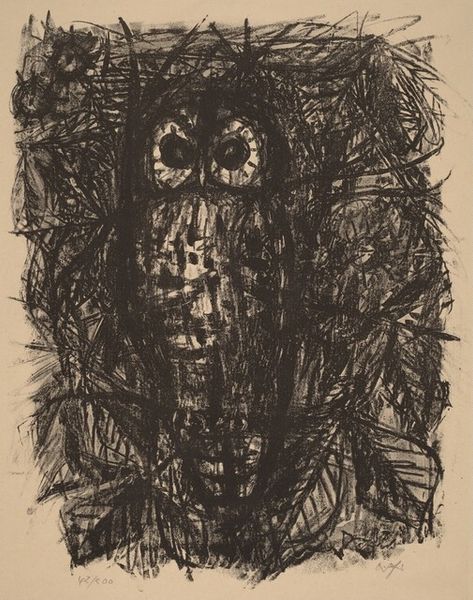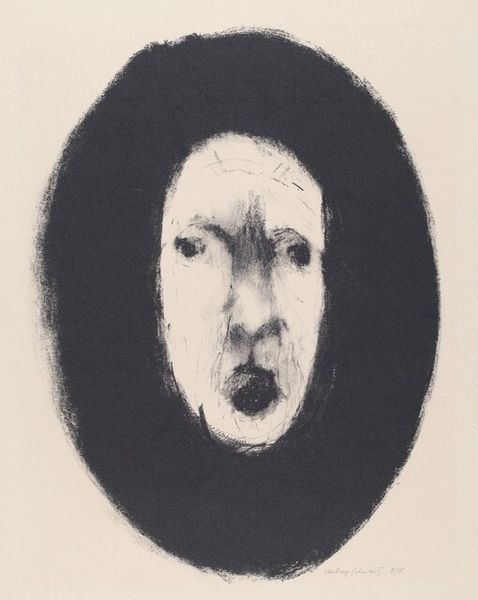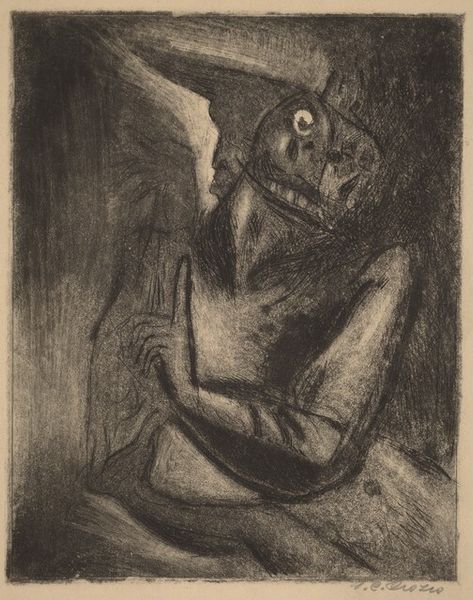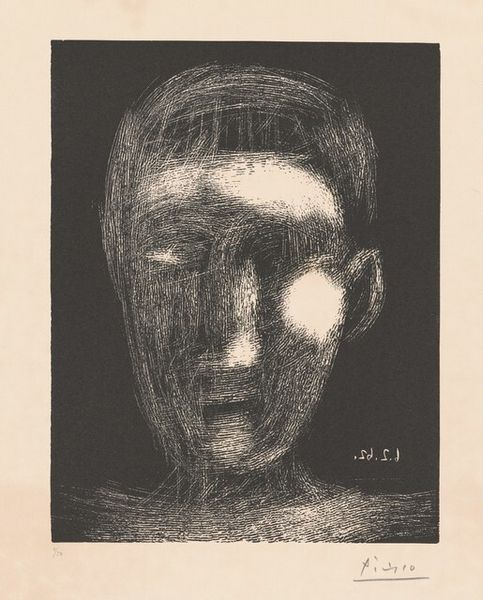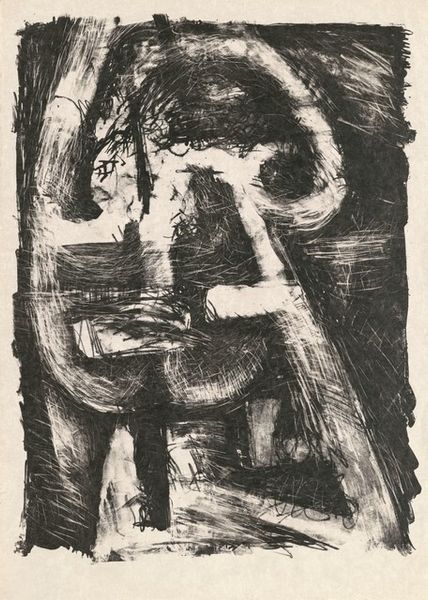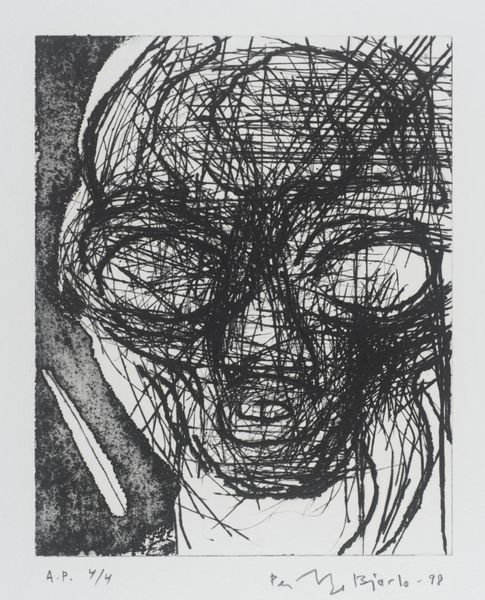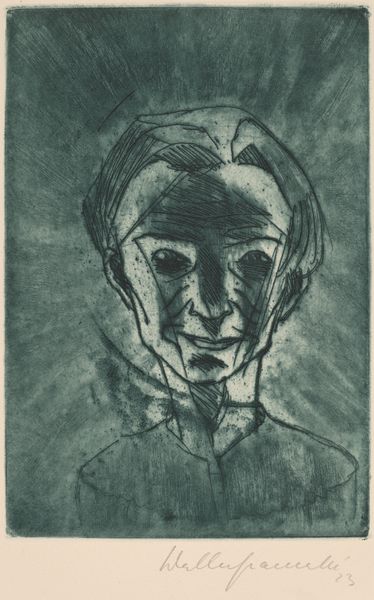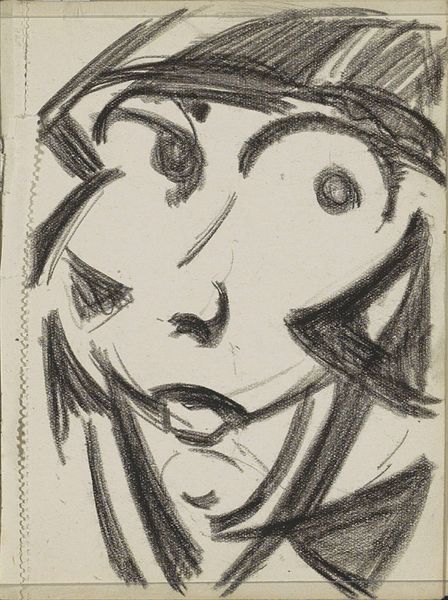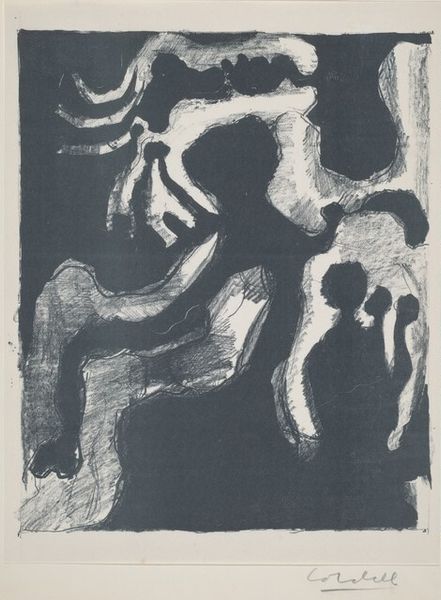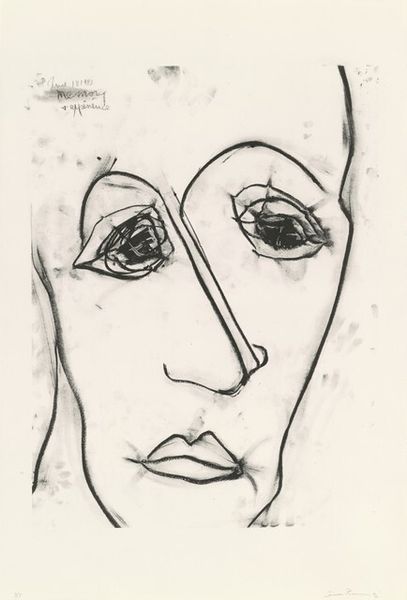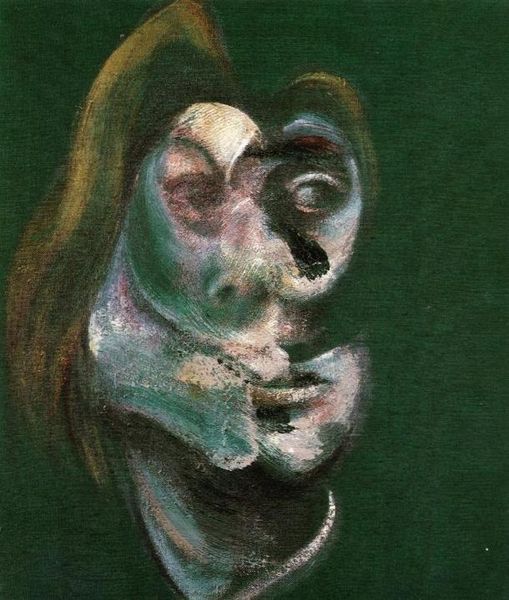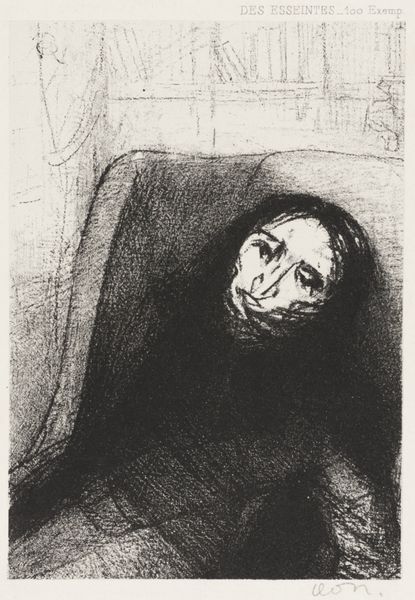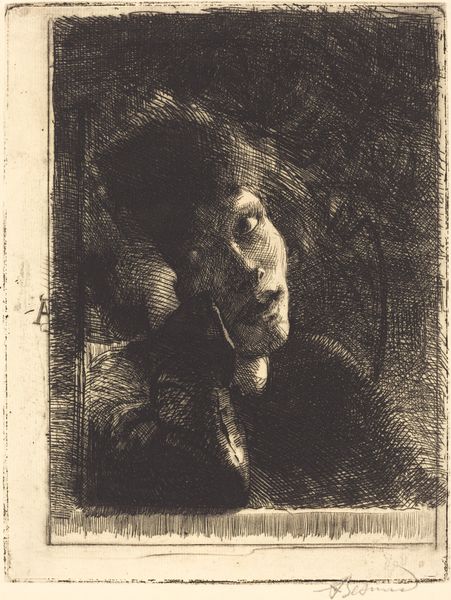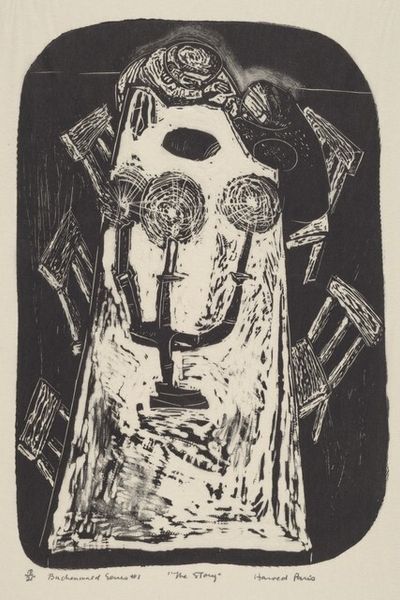
Dimensions: plate: 17.7 x 11.3 cm (6 15/16 x 4 7/16 in.) sheet: 47.8 x 32.4 cm (18 13/16 x 12 3/4 in.)
Copyright: National Gallery of Art: CC0 1.0
Curator: Jan Bauch’s “Sad Clown,” created in 1970, employs ink in what seems to be either a print or a drawing technique. The portrait format isolates the figure, intensifying the expression. What strikes you first about this piece? Editor: The stark contrast. It is immediately unsettling – those dark, cavernous eyes contrasted against the pallid face, a powerful depiction of vulnerability masked by performance. Curator: The hatching and cross-hatching create a dramatic chiaroscuro effect, particularly around the eyes, nose, and the suggestion of the clown’s makeup. Notice the limited tonal range. The composition sacrifices conventional realism, embracing a rawer emotive expression, aligning with the hallmarks of Expressionism. Editor: This work resonates with a long, troubling history of the “clown” archetype – particularly, here, through its evocation of pathos. Clowns have been consistently read as figures who critique norms. I find myself wondering if Bauch’s sad clown functions as a symbolic commentary, speaking to post-war alienation and societal anxieties through the metaphor of theatrical melancholy. The exaggerated features, typical of clown makeup, further distance this figure, isolating them, and us as viewers, with them. Curator: Absolutely. One sees a flattening of form in favor of linear emphasis. Consider the function of the negative space. This is more than a portrait, or rather, its power does not solely reside in its accurate figuration but how distortion serves to underscore feeling. This goes far beyond a mimetic portrayal. Editor: And beyond entertainment. It prompts a complex emotional response, highlighting the contradictions of those forced to mask suffering. Art, such as “Sad Clown”, reveals the socio-psychological complexities of navigating marginalized roles and perhaps hints at hidden resistance. Curator: Well, looking at how Bauch plays with darkness, I find it successful aesthetically; its construction fosters emotional response through deliberately manipulated formal choices. Editor: Yes, and in excavating these emotive formal decisions, we confront its challenging discourse on public performance, private grief, and potentially veiled critiques of social structures.
Comments
No comments
Be the first to comment and join the conversation on the ultimate creative platform.
